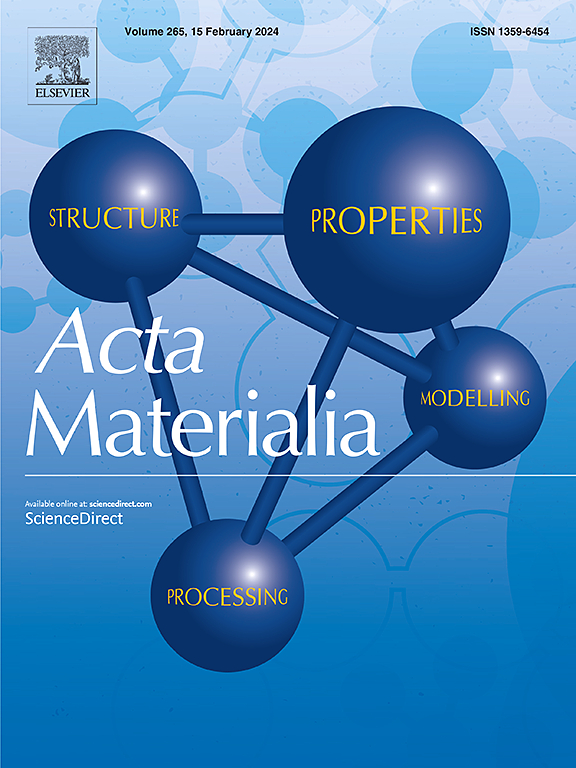磷灰石型钆基致密MGd4Si3O13 (M = Mg, Ca, Sr)陶瓷:一类新兴的亚液氦温度磁性制冷剂
IF 8.3
1区 材料科学
Q1 MATERIALS SCIENCE, MULTIDISCIPLINARY
引用次数: 0
摘要
低温磁制冷(MR)是一种基于磁性材料的磁热效应的制冷技术,被认为是一种独特而强大的制冷技术。本文介绍了一类很有前途的低温磁性制冷剂:磷灰石型钆基致密MGd4Si3O13 (M = Mg, Ca, Sr)陶瓷。这些陶瓷在亚液氦温度范围内表现出巨大的MC效应和突出的性能。在0-7和0-2 T的磁场下,陶瓷的最大磁熵变化值分别为59.5和32.2 J/kgK。这些结果超过了商用磁性制冷剂钆镓石榴石(GGG, ~ 32.8和14.6 J/kgK),优于大多数已知的基准低温磁性制冷剂。此外,这些磷灰石型钆基陶瓷具有相对较高的密度(6.277 ~ 6.562 g/cm3),并具有良好的环境稳定性。这些特性使得这些磷灰石型MGd4Si3O13陶瓷非常适合实际的亚液氦温度MR应用。本文章由计算机程序翻译,如有差异,请以英文原文为准。


Apatite-type gadolinium-based dense MGd4Si3O13 (M = Mg, Ca, and Sr) ceramics: An emerging class of sub-liquid helium temperature magnetic refrigerant
Low-temperature magnetic refrigeration (MR), based on the magnetocaloric (MC) effect of magnetic materials, is recognized as a distinct and powerful cooling technology. We herein introduce a class of promising low-temperature magnetic refrigerants: the apatite-type gadolinium-based dense MGd4Si3O13 (M = Mg, Ca, and Sr) ceramics. These ceramics exhibit giant MC effects and prominent performance in the sub-liquid helium temperature range. The maximum magnetic entropy change values of these ceramics are 59.5 and 32.2 J/kgK under magnetic fields of 0–7 and 0–2 T, respectively. These results surpass those of the commercial magnetic refrigerant gadolinium gallium garnet (GGG, ∼32.8 and 14.6 J/kgK) and are superior to most known benchmarked low-temperature magnetic refrigerants. Furthermore, these apatite-type gadolinium-based ceramics possess relatively high density (6.277∼6.562 g/cm3) and exhibit good environmental stability. These characteristics make these apatite-type MGd4Si3O13 ceramics highly suitable for practical sub-liquid helium temperature MR applications.
求助全文
通过发布文献求助,成功后即可免费获取论文全文。
去求助
来源期刊

Acta Materialia
工程技术-材料科学:综合
CiteScore
16.10
自引率
8.50%
发文量
801
审稿时长
53 days
期刊介绍:
Acta Materialia serves as a platform for publishing full-length, original papers and commissioned overviews that contribute to a profound understanding of the correlation between the processing, structure, and properties of inorganic materials. The journal seeks papers with high impact potential or those that significantly propel the field forward. The scope includes the atomic and molecular arrangements, chemical and electronic structures, and microstructure of materials, focusing on their mechanical or functional behavior across all length scales, including nanostructures.
 求助内容:
求助内容: 应助结果提醒方式:
应助结果提醒方式:


